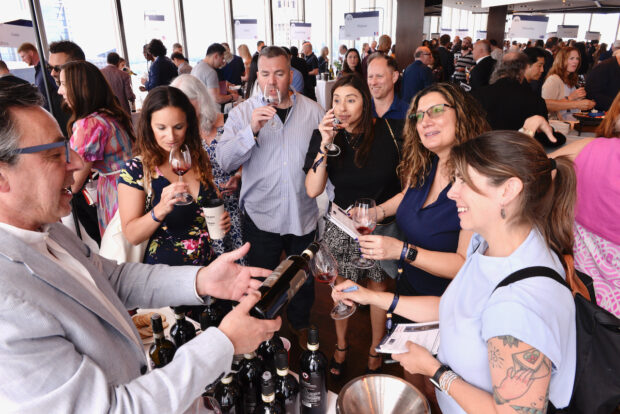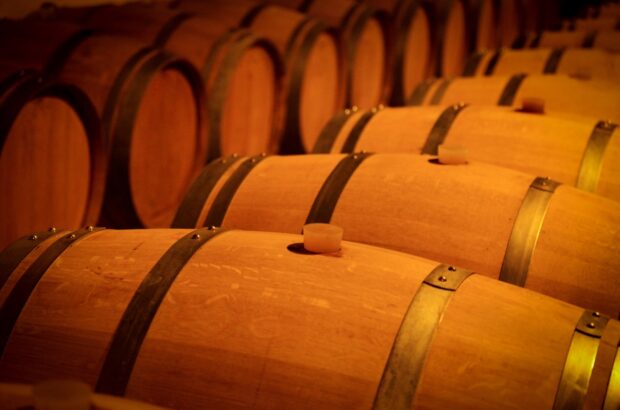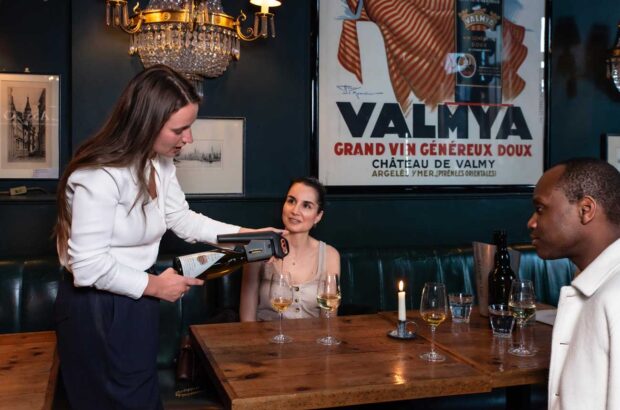It achieved notoriety as the origin of Gallo’s ‘fake Pinot’. Yet Limoux merits fame for its distinct sparkling and still whites, says James Lawther MW, as he visits an island of white in the Languedoc’s sea of red
A corner of southern France’s Languedoc region was in the news in 2010, for all the wrong reasons. Limoux is home to the Sieur d’Arques co-operative which, along with other defendants, was found guilty of selling adulterated Pinot Noir to California’s E&J Gallo for its Red Bicyclette brand. It’s a sorry tale on various counts, but not least via the harm done to Languedoc’s image but also because it obscured the fact that Limoux’s most interesting wines are, in fact, sparkling and (dry) white.
Just south of the medieval city of Carcassonne in the Aude valley, Limoux forms a sort of frontier zone where Mediterranean and Oceanic climates meet. The hills and valleys are relatively verdant and the
vegetation mixed, ash trees and ferns sharing space with holly oak and wild thyme. On a clear day, the snow-capped Pyrenees provide a spectacular backdrop to the south. Hence the anomaly of finding Chardonnay, Chenin Blanc and Mauzac, rather than a dominance of the Mediterranean grapes more closely associated with the Languedoc.
Limoux’s singularity is linked to its climate. Temperatures are cooler and rainfall higher than in other parts of the Languedoc, due to the distance from the Mediterranean Sea. Altitude also plays a part; the vineyards are planted from 200 to 500 metres. Then there’s the wind, either a maritime breeze or the cool, north-westerly Tramontane or Sers. Taken together, this makes for longer and later ripening, enough for Chardonnay and other whites, but more of a battle for Carignan, Mourvèdre and Grenache.
The main wine styles
The tradition for sparkling wine pre-dates that of Champagne, Benedictine monks credited with the production of a naturally sparkling wine in 1531. Blanquette de Limoux (an appellation from 1938) is now made by traditional method but remains the region’s most individual wine thanks to the local grape, Mauzac (minimum 90% in the blend). Found in only the Limoux and Gaillac ACs, Mauzac gives a light, crisp, dry fizz with a distinctive Granny Smith apple tang. There’s also a limited production of Blanquette Méthode Ancestrale, a naturally fermented, sweet version with about 7% alcohol, 80 to 90 grams/litre residual sugar, balancing acidity and more of a baked apple aroma and flavour.
Chardonnay and Chenin Blanc first appeared inthe 1970s, first planted to make still, dry wines sold as Vins de Pays. Then came the initiative to create a consumer-friendly sparkling wine with global appeal and a finer edge. Crémant de Limoux was born (1990). This has a majority of Chardonnay, a minimum of 20% Chenin Blanc, often a dash of Mauzac and, since 2004, up to 10% Pinot Noir is allowed. Pinot has also opened the doors for a rosé fizz. Crémant de Limoux production has risen and is now equal to that of Blanquette, each declaring 24,000 hectolitres in 2009 (a small harvest), the equivalent of 3.3 million bottles. Most of the sparkling wines I tasted on a trip to the region last year were well made and, at about E10, great value.
The Limoux AC accounts for 1,500 hectares, producing not only sparkling wines but still white and, since 2004, red. Chardonnay is the mainstay for the whites though there are some rarer solo bottlings of Mauzac and Chenin Blanc. All have to be barrel fermented and aged, so there’s more complexity to accompany the freshness the climate imparts. Publicity for the region’s Chardonnay has, for the past 20 years, been dominated by the annual Toques et Clochers charity barrel auction. Launched by Sieur d’Arques in 1990, it is modelled on Burgundy’s Hospices de Beaune auction and sees the participation of celebrated chefs from France and, recently, other European countries.
Other whites such as Sauvignon Blanc and Gewurztraminer are successfully cultivated but have to be sold as Vins de Pays. The same applies to Chardonnay if it doesn’t conform to the regulationsof Limoux AC. Red Limoux has to be made from a minimum of 50% Merlot with the possible addition of Cabernet Sauvignon, Cabernet Franc, Syrah, Grenache and Malbec. Pinot Noir can only be used in sparkling wines and must otherwise be sold as a Vin de Pays. But there’s a strong feeling that this isthe red grape best suited to the region’s conditions.
Leading names
Despite the fake Pinot scandal, the Sieur d’Arques co-op remains the locomotive for the region, producing up to 70% of Limoux’s sparkling wines.These appear in various forms, from UK supermarket brands (Tesco’s Blanquette, Waitrose’s Cuvée Royale Crémant) to the relatively new Première Bulle range. They are usually reliable in quality. The co-op also makes the Toques et Clochers range of still Chardonnays from four different sub-zones.
Apart from the co-op, one of the largest producers is family winery Antech, run by Françoise Antech-Gazeau, the sixth generation at the helm. Sparkling wines are the speciality, the grapes supplied by the family vineyard (50%) and a group of 23 vignerons who follow a quality charter. The wines are precise, Blanquette something of a speciality.
Significantly, a few top sparkling producers have ties with Champagne. Jean-Louis Denois hails from a family of vignerons in the Marne and arrived in Limoux in 1989, first creating Domaine de l’Aigle, now owned by Languedoc négociant Gérard Bertand,then his eponymous brand. While Domaine J Laurens, although owned by retired businessman JacquesCalvel, was created in the 1980s by Champenois Michel Dervin, assured winemaking is today carried out by his former cellar master Henri Albrus.
In fact, the region has something of a liberal air, many of the more interesting domaines owned by outsiders or growers with experience elsewhere. Dutch couple Jan and Caryl Panman make still and sparkling wines at Château Rives-Blanques but are loyal advocates of the Mauzac. Their English neighbours James and Catherine Kinglake at Domaine Begude have taken Chardonnay to heart, producing it in a modern, accessible style.
Local boy Pierre Fort made wine at Château de Tracy in Pouilly-Fumé for 10 years before returning
to launch Domaine de Mouscaillo, his Chardonnaytaut and minerally in style. While Belgium-based
businessman Eric Fabre, originally from a family of vignerons in Nîmes, runs his organically cultivated Château de Gaure from a distance, the winemaker is Benoît Arletaz, at one time with Denois.
Limoux seems at odds with the sunny, red image of the Languedoc and its Mediterranean grapes. But it has a complementary place within the region. The best of the fizz offers outstanding value and the increasing number of good dry whites a freshness and complexity not easily achieved in the warm south. As to Limoux red, unlike in the infamous fraud case, the jury is still out.
Written by James Lauther MW






